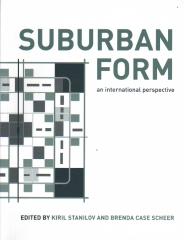This book examines and documents the remarkable development and transformation of suburban form throughout the globe during the twentieth century. The premise that suburban areas are monotonous, inert environments is put to a test through investigation of the complexity of those suburban settings and the dynamic physical changes that have taken place since their inception.
Contents:
Introduction: Postwar Growth and Suburban Development Patterns. Part 1. The Changing Form of Suburbs. Introduction 1. Community, Modernity, and Urban Change in Japan and the USA: Toyokawa and Cupertino in the Late Twentieth Century 2. Complexity and Contradiction in the Ageing Early Postwar Suburbs of Québec City 3. Morphological Diversity in the Squatter Settlements of Rio de Janeiro. Part 2. Understanding the Elements and the Patterns. Introduction 4. Making a Metropolitan Landscape: Lyons 1812-1994 5. Radial Street as a Timeline. Part 3. The Effect of Planning. Introduction 6. Transformations of Space: A Retrospective on Public Housing in Singapore 7. Building Types and Urban Fabric of Rome's Outer Suburbs: From Reading to Planning 8. Planning for Sprawl: The Evolution of a Regional Shopping Center. Part 4. The Reconstruction of the Suburbs. Introduction 9. The Transformation of Large Postwar Housing Areas in Sweden - Adaptation to a Blend of New and Old Planning Ideas 10. Suburban Morphology and Portland's Urban Growth Boundary 11. Conserving the Suburb: Mechanisms, Tensions and Results. Index

(0 Comentarios)